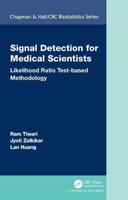Publisher's Synopsis
This special volume of the Journal of Elasticity represents the first in a new p- gram dedicated to the occasional publication of collections of invited, reviewed papers of topical interest. The purpose of this program is to spotlight the dev- opments and applications in the mechanics of materials within specific areas that can enhance growth and provide insight for the advancement of the field as well as promote fundamental understanding and basic discovery. Soft Tissue Mechanics is an area of biomechanics that draws heavily upon f- damental ideas and material models from nonlinear elasticity and viscoelasticity. A major goal of this research is to understand those mechanics properties of heart, artery, collagen and skeletal muscle tissue that can be used for the diagnosis of health problems and the improvement of human life. This volume illustrates how experiment, modeling and computation is currently employed in this emerging field. May 2001 ROGER FOSDICK Editor-in-Chief Journal of Elasticity 61: ix-xii, 2000. ix Preface There are two primary areas for the application of elasticity in the biomechanics of tissues: hard tissue mechanics (e.g., bone, teeth, horns, etc.) and soft tissue - chanics (e.g., skin, tendons, arteries, etc.). The distinguishing feature between these tissue types is the amount of physiological "normal" deformation they experience. While "hard" tissues only experience small deformations, soft tissues typically experience large deformations. From a biomechanics viewpoint soft tissues fall within the realm of finite elasticity.









